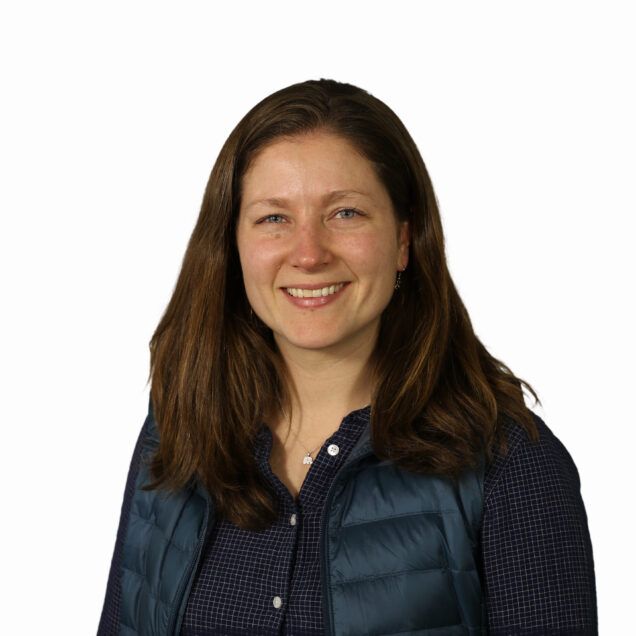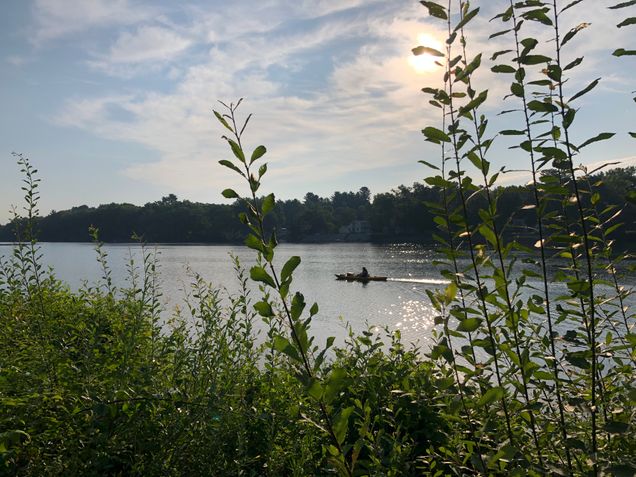#BUandBoston: Beth Haley Develops Public Health Model for Predicting Water Quality in the Merrimack River
This post is part of our #BUandBoston series, highlighting the work and research of BU students, faculty, and staff throughout the City of Boston and the Greater Boston region. Interested in having your Boston-related work featured? Tag us on Instagram or Twitter (@BUonCities) using the #BUandBoston or send us an email at ioc@bu.edu.
Beth Haley, a PhD student in the Department of Environmental Health at the Boston University School of Public Health (SPH) and URBAN Program, was recently awarded $5,000 through the MetroLab Network’s Civic Research Innovation Prize Pitch Competition. The prize awarded innovative ideas for civic research projects to carry out in partnership with a local government agency or community partner.
Haley previously received a 2020 Early Stage Urban Research Award from Initiative on Cities (IOC) for her project, “Assessing the association between combined sewer overflow events and gastrointestinal illness in the Merrimack Valley.”

Haley is partnering with the Merrimack River Watershed Council (MRWC) to develop a model to estimate bacteria concentrations in the Merrimack River of New Hampshire and northern Massachusetts, which includes several cities in the Greater Boston region. Haley has worked with MRWC since 2019 on various projects related to water quality and recreational exposure in the river.
The 117-mile Merrimack River serves as a recreational destination and provides more than half a million people with drinking water, but it has a long legacy of pollution. Today, six communities in the watershed contain combined sewer systems that release hundreds of millions of gallons of untreated sewage, stormwater, and industrial wastewater into the river during heavy rainfall, posing a public health risk for downstream communities. These events are called combined sewer overflow events (CSO’s).
“Sometimes water quality fluctuations are predictable. If it’s raining, the water will probably be more turbulent and there will probably be more bacteria in it. But the magnitude to which it varies depends on a lot of factors,” said Haley. “Using a modeling approach, we can take a lot of that complex data and synthesize it into an estimate that tells the community members whether or not the bacteria levels are within what’s considered a safe range. Then, that allows them to make decisions on their own about whether or not they want to recreate in that area.”
Robinson W. Fulweiler, Professor in the Earth and Environment Department at the College of Arts and Sciences, served as a collaborator on the project. Fulweiler explained that the Merrimack River watershed is home to about 2.6 million people and 200 communities, and it currently provides drinking water to approximately 500,000 people.
“Rivers, like the Merrimack, are essential to our daily lives,” said Fulweiler. “Our ability to maintain high water quality — and forecast and alert people when water quality is poor — is a critical part of keeping our communities safe.”
The MetroLab award will support Haley’s work as she develops and evaluates a predictive model for E. coli concentrations in the Merrimack River. The predictions from this model will be incorporated into a notification system that can release near-real time information about microbial water quality to all stakeholders. The model will use existing measurements of E. coli that are publicly available in addition to those collected through the MRWC and BUSPH monitoring programs. Additionally, the model will incorporate rainfall and temperature data, land cover, and CSO outfall locations.
“This is a skill set that I love to use. A lot of the work on this model is based on GIS, or a geographic information system. It’s a spatial software, and this is a spatial statistical model, so it’ll be very interesting from the technical side for me to personally grow those skills within GIS and within the statistical program, R, and to get those two programs to work together,” said Haley. “I’m really excited to generate visualizations and maps of these areas.”

The modeling method also provides estimates for a network of points. Haley anticipates that this data will also inform future monitoring programs by identifying potential hot spots and areas with high uncertainty. Areas with less certain estimates could improve over time if more data is collected there. The modeling approach uses publicly available data, as well as free or common software tools, meaning the method developed is generalizable to other watersheds and is achievable without highly specialized technical skills or lots of financial resources.
“Maybe MRWC can make a point to take more samples in the uncertain locations that then feed the model, so it forms a cyclical and iterative process. I’m really excited to create a tool that can be dynamic.”
This is one of several projects Haley has worked on within the Merrimack region regarding water quality. For her project funded by the IOC, which is still in progress, she has been studying the association between gastrointestinal illness and CSO. Haley also partnered with the Massachusetts Department of Environmental Protection on water quality sampling that will be used in a health risk assessment for recreational users of the river.
Wendy Heiger-Bernays, Clinical Professor in the Department of Environmental Health at BU SPH, collaborated on the project with Haley as well. Heiger-Bernays noted that WBUR recently published an article highlighting the water quality research being done in the river.
“The Merrimack River is used by hundreds of thousands of people for drinking water and recreation. The river is a place into which waste is released, including raw sewage and toxics, and the only way we can understand the improvement or degradation of the Merrimack is to understand the water quality,” said Heiger-Bernays. “Because the river is flowing, only with this data can we make predictions about where that contamination is located and what the health risks are.”
To stay up-to-date, follow us on Twitter or Instagram, or subscribe to our newsletter.